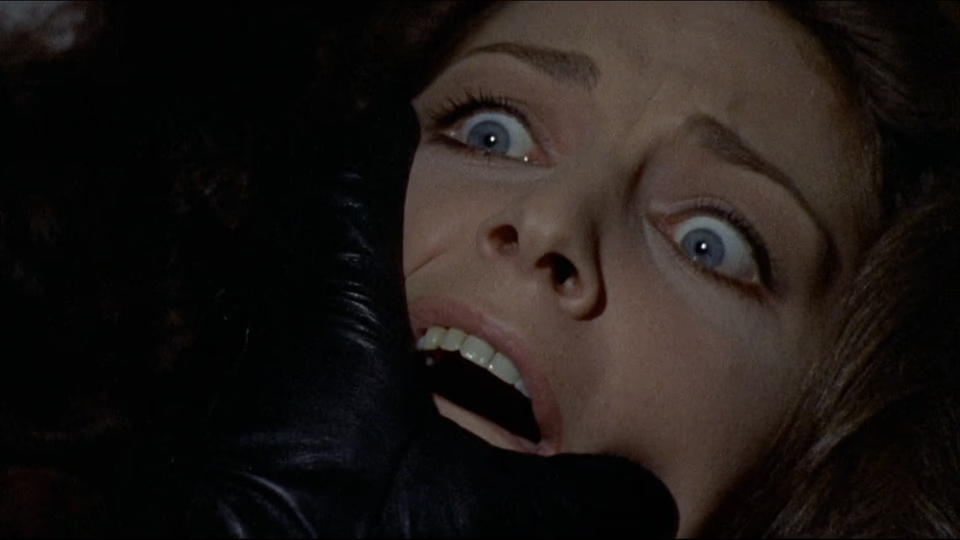The Bird with the Crystal Plumage

Dario Argento’s directorial debut. Tony Musante plays Sam, an American writer living in Rome. Walking the streets one night, he glances inside an art gallery and spies a black-clad assailant attacking a woman with a knife. Unable to gain entry, Sam watches the attacker escape as the woman lies bleeding on the floor. The police arrive in time to save the woman, but visions of the incident haunt Sam, driving him to investigate the attack. Soon, the killer’s targeting him and his live-in girlfriend, played by Suzy Kendall.
Argento’s visual style grabbed me from the get-go. Consider the art gallery scene. The establishing shot sees a bright light shining out of the building’s glass façade, drawing our eyes along with Sam’s. Inside, the woman’s white dress blends with the white walls and floor, forcing our gaze to the black-clad assailant and the woman’s crimson blood.
It’s a terrific use of contrast; a technique that Argento perfects in my favorite shot. It occurs later in the film, Sam has tracked the killer into a darkened room. As Sam enters, Argento cuts to a wide shot. The only light comes from the doorway. Sam’s silhouette moves to the center of the otherwise pitch-black screen. Then the lights reverse to startling effect. That Argento would even try such a tricky shot shows his confidence. That he pulls it off heralds a major talent.
But Argento’s visual focus can also be a detriment, particularly when he treats his characters as props rather than people. Suzy Kendall’s character proves the most grievous example. Argento provides her no agency. She exists to be menaced. Finding herself under siege by the killer, she barricades her apartment’s heavy door. Finding no other exit, she crumbles to the bathroom floor as the killer stabs at the thick wooden door.
Sure, Argento gets some memorable shots of a wide-eyed Kendall clinging to the bathroom sink, but the scene lost me. By having her scour the apartment for an exit, Argento reveals the lack of another entry. After locking and barricading the door, she need only grab a weapon and wait. Granted, it might be a long wait—boring through inches of hardwood with a kitchen knife takes time—but should the killer poke a limb through, she could stab or bludgeon it. Instead, Argento has her writhe around on the bathroom floor as though the killer were literally breathing down her neck. What begins tense and stylish, drags and devolves into overwrought indulgence.
Argento recognizes and corrects this problem with his later female leads, so chalk this up as a novice misstep marring an otherwise inventive thriller.